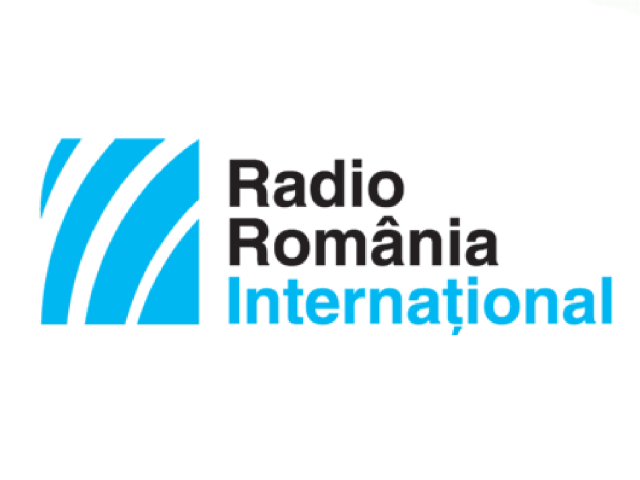Russian troops on Romanian territory during WW1
In the First World War, Romania was an ally of France, England and Russia.

Ștefan Baciu, 23.11.2020, 13:25
In the First World War, Romania was an ally of France, England and Russia. Defeated in the 1916 campaign in the south, the Romanian army retreated to the east, to Moldavia, where 1 million Russian soldiers were dispatched to fight back the German-Austrian-Hungarian attacks. However, in only a year and a few months, the Russian soldiers stationed in Romania moved from order to anarchy. Historian Șerban Pavelescu with the Institute of Political Studies, Defense and Military History is the author of the book “The Enemy Ally” which comprizes the memoirs of two Russian generals, Nikolai A. Monkevitz and Aleksandr N. Vinogradski, who fought on the Romanian front in 1917-1918. The two Russian generals described the state of affairs in the war, interpersonal relations and glimpses of everyday life. Șerban Pavelescu explained the choices made by Romania during the Great War.
Finding itself between Germany and Russia, Romania entered the battle on the side the Entente, although it was part of the Triple Alliance: “Romania did not want to become an ally of Russia, as it had never trusted it. Romania had even joined the Triple Alliance to counterbalance the military threat posed by Russia. On the other hand, Romania wanted to forge an alliance with France, just as it had wanted to become the ally of Germany in 1883 and had to swallow the Austro-Hungarian bitter pill. This time Romania wanted to become the ally of France and Great Britain, so it had to swallow the Russian pill.”
This is how the Romanian-Russian alliance formed, an alliance kept alive by the French. Șerban Pavelescu: “The relations between the Russian and Romanian command were most times acceptable, but had many ups and downs. What kept the alliance in place until the February 1917 revolution was the constant presence of the French military mission led by General Henri Mathias Berthelot. In addition to equipping, training and rebuilding the Romanian army, in 1916-1917 the French military mission also made constant efforts to maintain good relations with the Russian ally. Thus, it supervised the transport of equipment, ammunition and other war supplies that were transported across the entire Russian territory to Romania. There were members of the French military mission present at every rail junction, making those transports possible, given that the needs of the Russian front were a priority. ”
But the Romanian-Russian alliance was built on suspicion on the part of the Romanians and on arrogance on the part of the Russians. Șerban Pavelescu: “When the Russians entered the war, they told the French that for them the Romanian front was nonsense and that it was impossible to defend it. In their opinion, what the Romanians had requested and the allies had committed themselves to, namely defending the southern front, was impossible. The Russians set the ideal front line on the Siret River. There was also the delay with which Russian troops entered the battle while the Romanian army was struggling to defend the passes in the Carpathians and push back the enemy on rivers Jiu and Olt. The Russians entered much too late the battle for Bucharest. On the southern front, in Dobruja, they only sent several sacrificial troops, among which the heroic Serbian division that lost almost half of its soldiers in battles that did not change the fate of the war. “
In their memoirs, the two Russian generals say their soldiers in Romania were well trained and well nourished, had enough weapons and ammunition and had not been affected by the recurrent waves of typhoid fever. However, the revolution of February 1917 would change everything. It brought about the disintegration of the Russian army due to Bolshevik propaganda and the abolition of military discipline and hierarchy by the provisional Russian government. The German-Austrian-Hungarian offensive in the summer of 1917 was only stopped by the huge efforts of the Romanian army, while in the north, in Ukraine, entire Russian units defected in front of the Central Powers’ armies. According to Șerban Pavelescu, in a short time, the fragile Romanian-Russian alliance turned into a ferocious enmity. Track: “The Russian army turned from an ally into an imponderable insecure matter, and in the fall of 1917 became a real enemy. Most Russian troops were behind the front line, and many of them were also in the Nicolina area, near Iasi. The Bolshevik movement there and the revolutionary committees set up after October 1917, were a threat for the political and administrative structures of the Romanian state. The situation was very close to conflict, which eventually happened in the winter of 1917-1918 when the Romanian troops finally intervened against the former ally in order to expel it from Romania’s territory. Real battles were fought between the Romanian and Russian troops in 1918, with the Romanian troops trying to prevent the Russians from leaving the front with equipment, weapons and ammunition. Behind the front line, the lack of discipline, the disorganization, and the revolutionary agitation turned the Russian troops into gangs of robbers who destroyed everything in their way. ”
At the end of the First World War, Russia and Romania went to opposite directions and remained in unfriendly terms. Russia chose the communist regime while Romania chose Romania the liberal democracy.






























